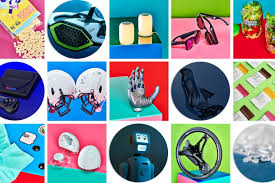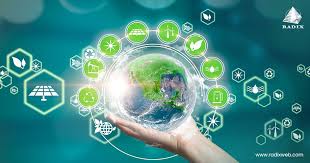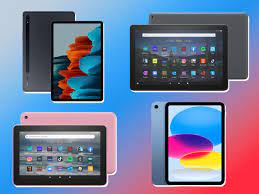New Technology Inventions
The world of technology is ever-evolving, with new inventions and innovations constantly emerging to shape the future. These advancements are not only transforming industries but also enhancing the way we live, work, and interact with each other. Below, we explore some of the most exciting new technology inventions that are making waves in 2023.
Quantum Computing
Quantum computing is poised to revolutionise the tech industry by solving complex problems that are currently beyond the reach of classical computers. Unlike traditional computers that use bits to process information in binary (0s and 1s), quantum computers utilise qubits, which can represent both 0 and 1 simultaneously thanks to superposition. This allows them to perform multiple calculations at once, drastically increasing computational power and efficiency.
Augmented Reality Glasses
Augmented Reality (AR) glasses are gaining traction as a versatile tool for both personal and professional use. These wearable devices overlay digital information onto the real world, providing users with an immersive experience. From gaming and entertainment to navigation and remote assistance, AR glasses have a wide range of applications that enhance everyday life.
Autonomous Delivery Drones
The logistics and delivery sector is undergoing a transformation with the advent of autonomous delivery drones. These unmanned aerial vehicles can transport packages quickly and efficiently, reducing delivery times and costs. Companies like Amazon and UPS are already testing drone delivery services, which promise to revolutionise e-commerce by providing faster shipping options.
Biodegradable Sensors
In an effort to combat electronic waste, scientists have developed biodegradable sensors that can be used in various applications such as environmental monitoring and medical diagnostics. Made from eco-friendly materials, these sensors break down naturally after their useful life, reducing their impact on the environment while still providing accurate data collection.
Smart Fabrics
Smart fabrics are textiles integrated with electronic components such as sensors, actuators, and microcontrollers. These innovative materials can monitor health metrics like heart rate and body temperature or even change colour based on environmental conditions. The potential applications for smart fabrics span across healthcare, sportswear, fashion, and more.
Advanced Prosthetics
The field of prosthetics has seen remarkable advancements with the development of advanced prosthetic limbs that offer greater functionality and comfort for users. Modern prosthetics now incorporate robotics, AI-driven control systems, and sensory feedback mechanisms that allow for more natural movement and improved quality of life for amputees.
Flexible Displays
Flexible displays represent a significant leap forward in screen technology. Made from bendable materials like OLED (Organic Light-Emitting Diode), these displays can be curved or folded without compromising image quality or durability. This innovation opens up new possibilities for devices such as foldable smartphones, rollable TVs, and wearable screens.
The Future Awaits
The rapid pace of technological advancement shows no signs of slowing down. As researchers continue to push the boundaries of what is possible, we can expect even more groundbreaking inventions in the coming years that will further transform our world in ways we cannot yet imagine.
The future is indeed bright with endless possibilities brought forth by these new technology inventions.
Top 5 Benefits of New Technology Inventions: Enhancing Efficiency, Convenience, Quality of Life, Connectivity, and Empowerment
- Increased efficiency in various industries
- Enhanced convenience and accessibility for users
- Improved quality of life through innovative solutions
- Greater connectivity and communication among individuals
- Empowerment of individuals with new tools and capabilities
Challenges of New Technology: Privacy, Employment, Inequality, and Security Risks
Increased efficiency in various industries
New technology inventions have significantly boosted efficiency across various industries, revolutionising traditional processes and workflows. Automation, data analytics, and artificial intelligence are just a few examples of innovations that have streamlined operations, reduced errors, and accelerated productivity. In manufacturing, for instance, advanced robotics and IoT devices have optimised production lines, leading to faster output and lower costs. Similarly, in healthcare, digital health solutions have improved patient care by enabling remote monitoring and personalised treatments. Overall, the increased efficiency brought about by new technology inventions not only enhances business performance but also drives progress towards a more interconnected and agile future.
Enhanced convenience and accessibility for users
One significant benefit of new technology inventions is the enhanced convenience and accessibility they offer to users. From smart devices that streamline daily tasks to online services that provide instant access to information and resources, modern technologies have revolutionised the way we live and work. These innovations empower individuals by making essential services more readily available, simplifying complex processes, and enabling seamless communication across distances. As a result, users can enjoy greater efficiency, flexibility, and connectivity in their personal and professional lives, ultimately enhancing their overall quality of life.
Improved quality of life through innovative solutions
New technology inventions have significantly improved the quality of life by offering innovative solutions that address various challenges faced by individuals. From advanced healthcare technologies that enhance medical treatments and diagnostics to smart home devices that simplify daily tasks, these innovations have made life more convenient, efficient, and enjoyable. For example, wearable health trackers provide real-time monitoring of vital signs, empowering individuals to take proactive steps towards better health. Additionally, assistive technologies such as smart prosthetics and communication devices have transformed the lives of people with disabilities, enabling greater independence and participation in society. Overall, the impact of new technology inventions on improving quality of life is profound and continues to shape a brighter future for all.
Greater connectivity and communication among individuals
One significant advantage of new technology inventions is the enhancement of connectivity and communication among individuals. With the rise of social media platforms, messaging apps, and video conferencing tools, people can now easily stay connected with friends, family, and colleagues regardless of their physical location. This increased connectivity fosters stronger relationships, facilitates collaboration on a global scale, and enables the exchange of ideas and information at an unprecedented speed. As technology continues to evolve, it is bridging gaps and bringing people closer together in ways that were once unimaginable.
Empowerment of individuals with new tools and capabilities
One significant advantage of new technology inventions is the empowerment of individuals through the provision of innovative tools and capabilities. These advancements equip people with the means to enhance their productivity, creativity, and problem-solving skills. Whether it’s through access to educational resources, communication platforms, or specialised software, individuals can now leverage technology to achieve their goals more efficiently and effectively. This empowerment fosters a sense of independence and self-reliance, enabling individuals to take control of their lives and pursue opportunities that were previously out of reach.
Privacy Concerns
Privacy concerns are a significant con associated with new technology inventions. As advancements continue to push the boundaries of data collection and surveillance capabilities, individuals are increasingly at risk of having their personal information compromised. From smart devices that track our every move to algorithms that predict our behaviour, the potential for privacy invasion is a growing concern in today’s digital age. Safeguarding personal data and ensuring transparency in how it is used have become critical challenges that must be addressed as we navigate the evolving landscape of technology innovation.
Job Displacement
The advent of automation and AI technologies, while driving efficiency and innovation, has also brought about significant concerns regarding job displacement. As tasks that were once performed by humans become automated, there is a tangible risk of job losses across various sectors. This shift can particularly impact roles that involve repetitive or routine activities, such as manufacturing and administrative positions. While new technology creates opportunities in emerging fields, the transition can be challenging for workers who may face unemployment or the need to reskill. The societal implications are profound, necessitating thoughtful strategies to manage workforce transitions and ensure that the benefits of technological advancements are equitably distributed.
Digital Divide
The digital divide poses a significant con of new technology inventions as it exacerbates the disparities in access to technological advancements. Not everyone has equal opportunities to benefit from these innovations, leading to a widening gap between those who can leverage new technologies for their personal and professional growth and those who are left behind. This inequality in access to technology further reinforces existing socio-economic divides and limits the potential for inclusive progress and development across various sectors. Efforts must be made to bridge this digital gap and ensure that the benefits of new technology inventions are accessible to all, regardless of their background or circumstances.
Security Risks
With the proliferation of interconnected devices and the Internet of Things (IoT), one significant con of new technology inventions is the heightened security risks they pose. The interconnected nature of these devices creates a larger attack surface for cybercriminals, leading to an increased vulnerability to cyber attacks and data breaches. As more personal and sensitive information is shared and stored across various platforms, the potential for malicious actors to exploit vulnerabilities in these systems grows, posing a serious threat to individuals, businesses, and organisations alike. It is imperative for users and developers to prioritise cybersecurity measures to mitigate these risks and safeguard against potential cyber threats in this evolving technological landscape.




